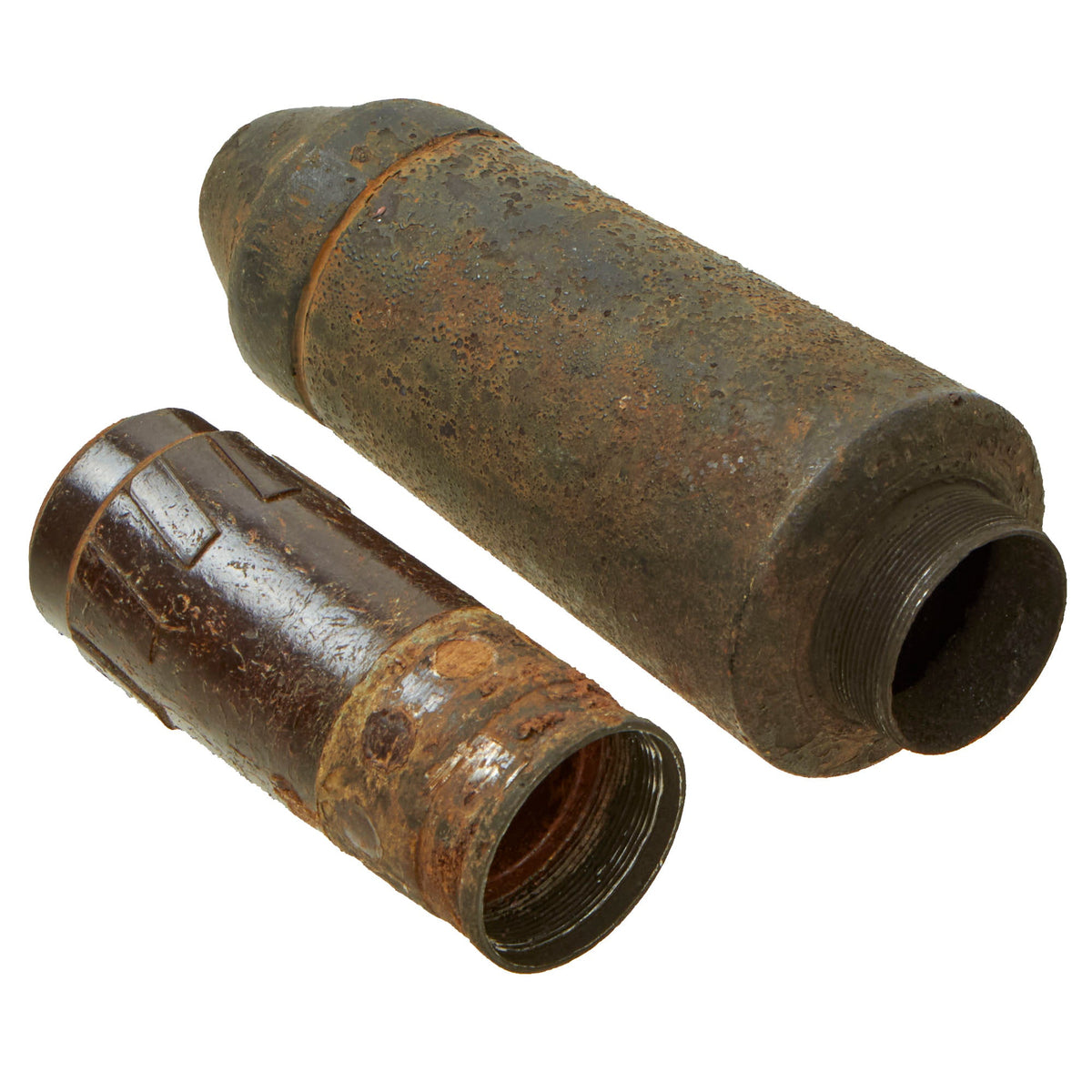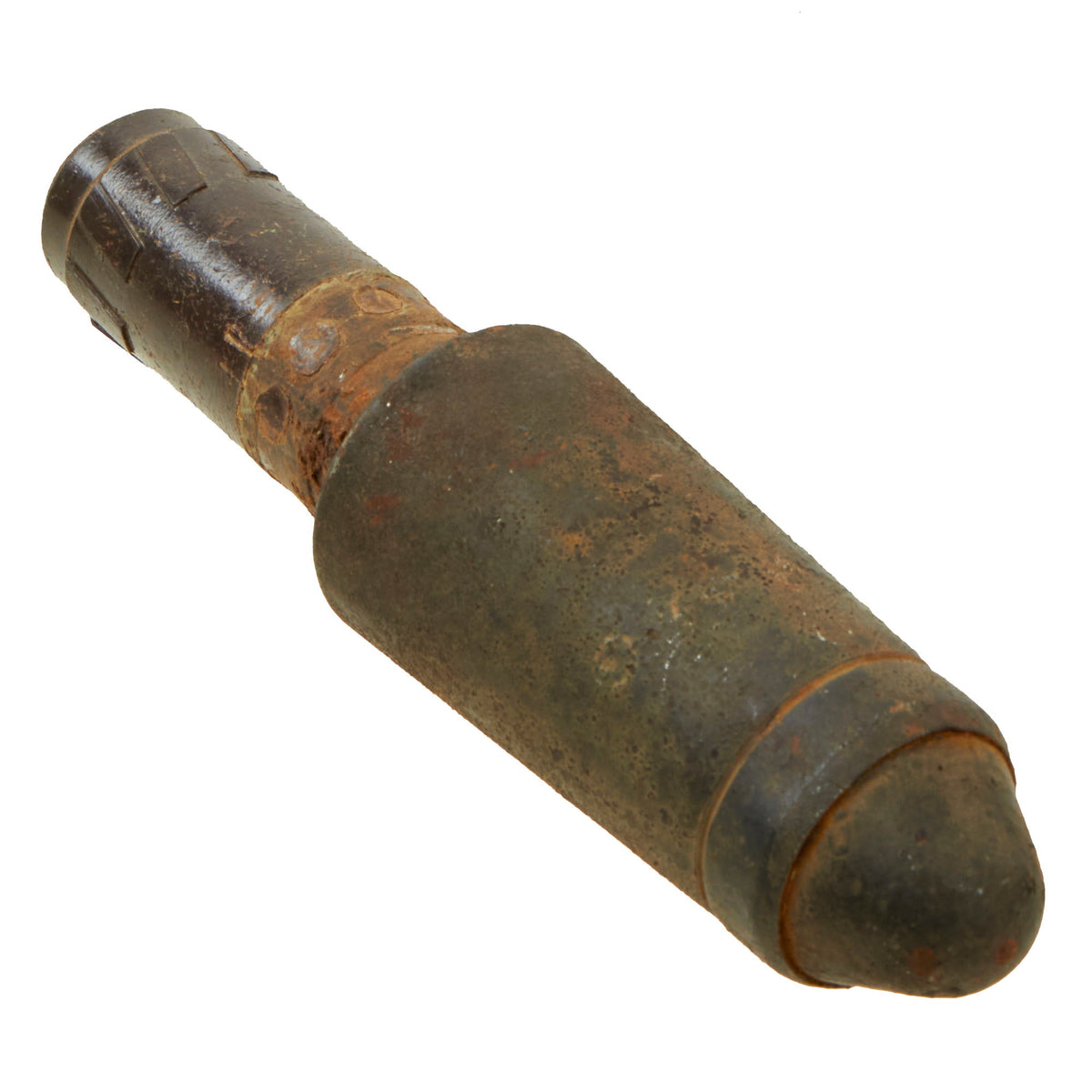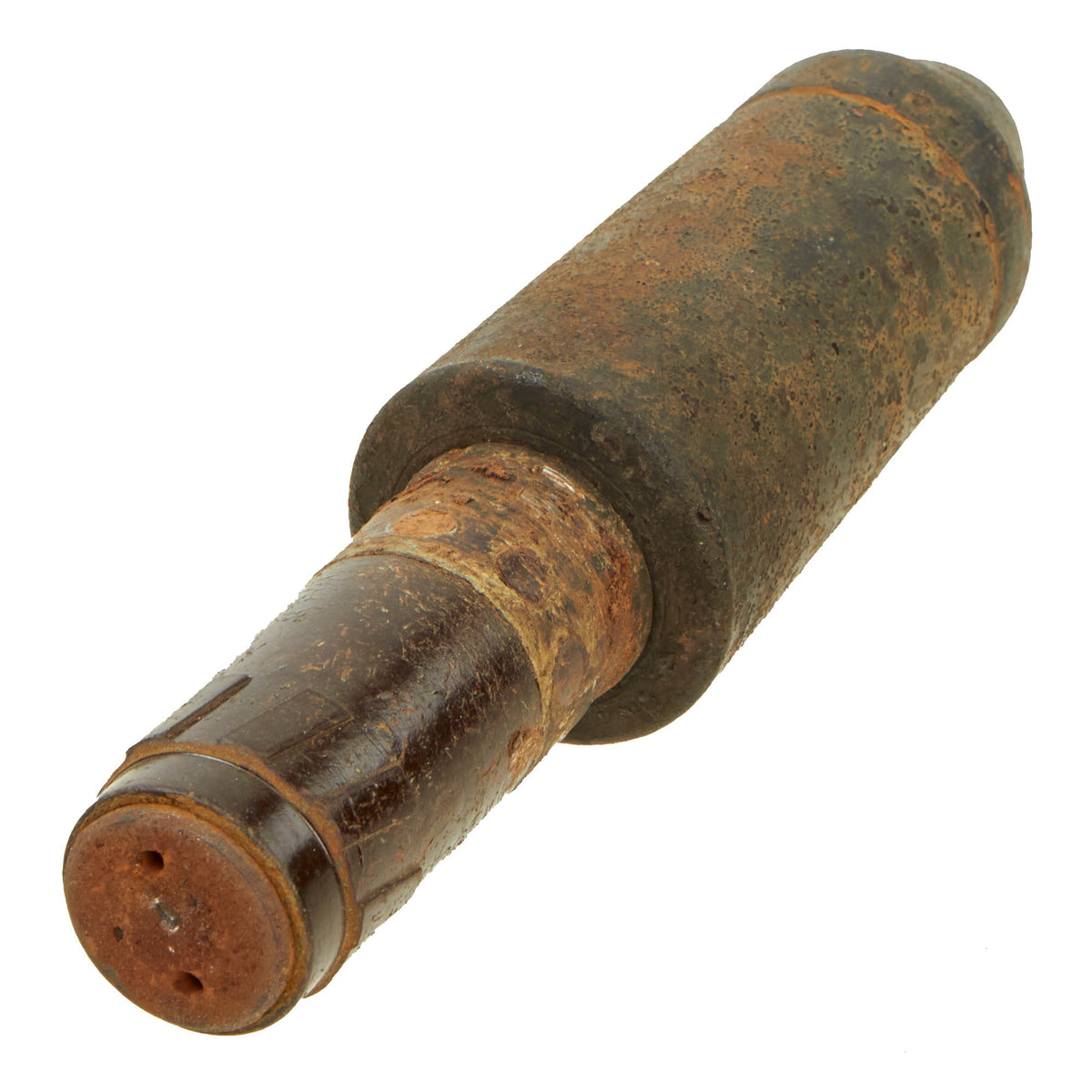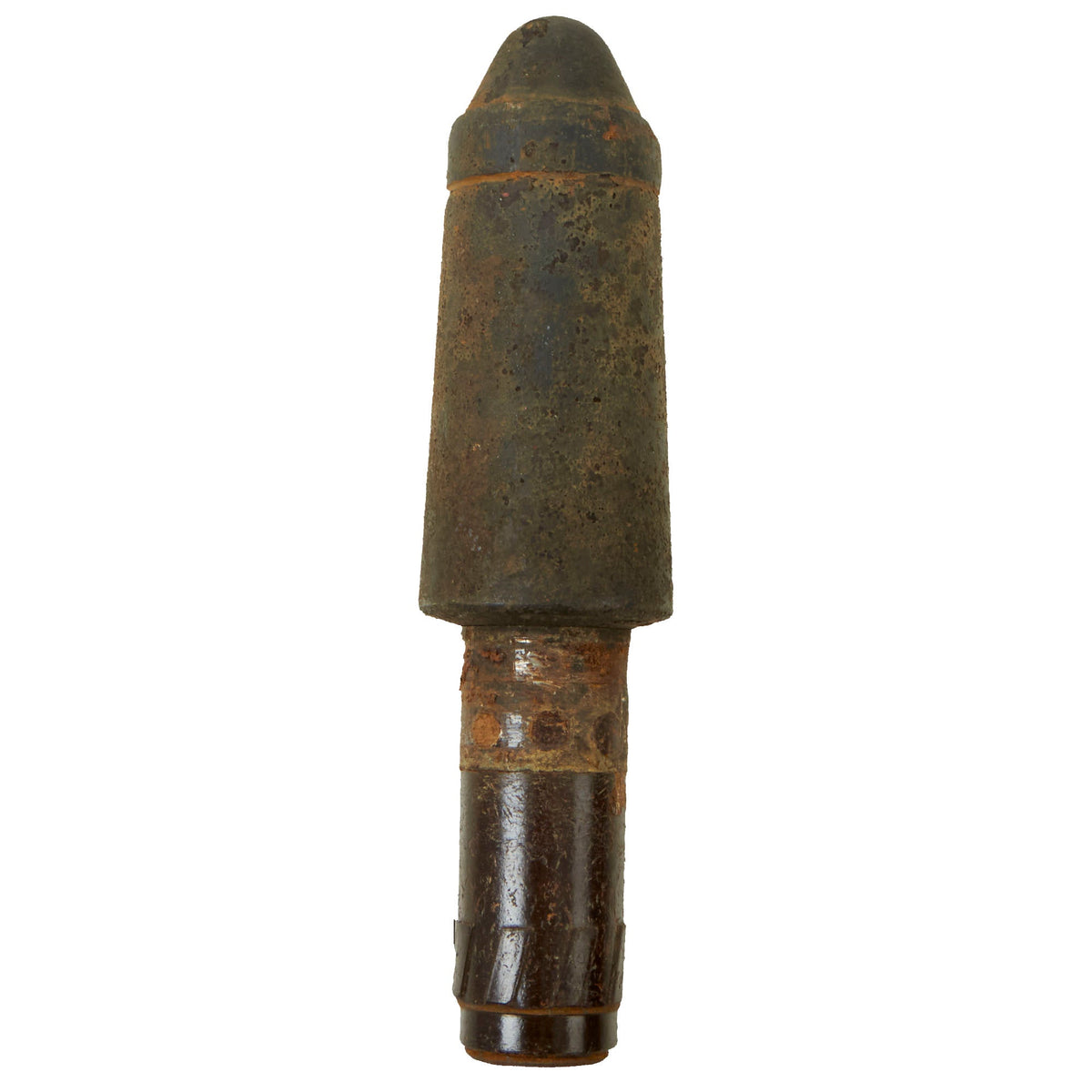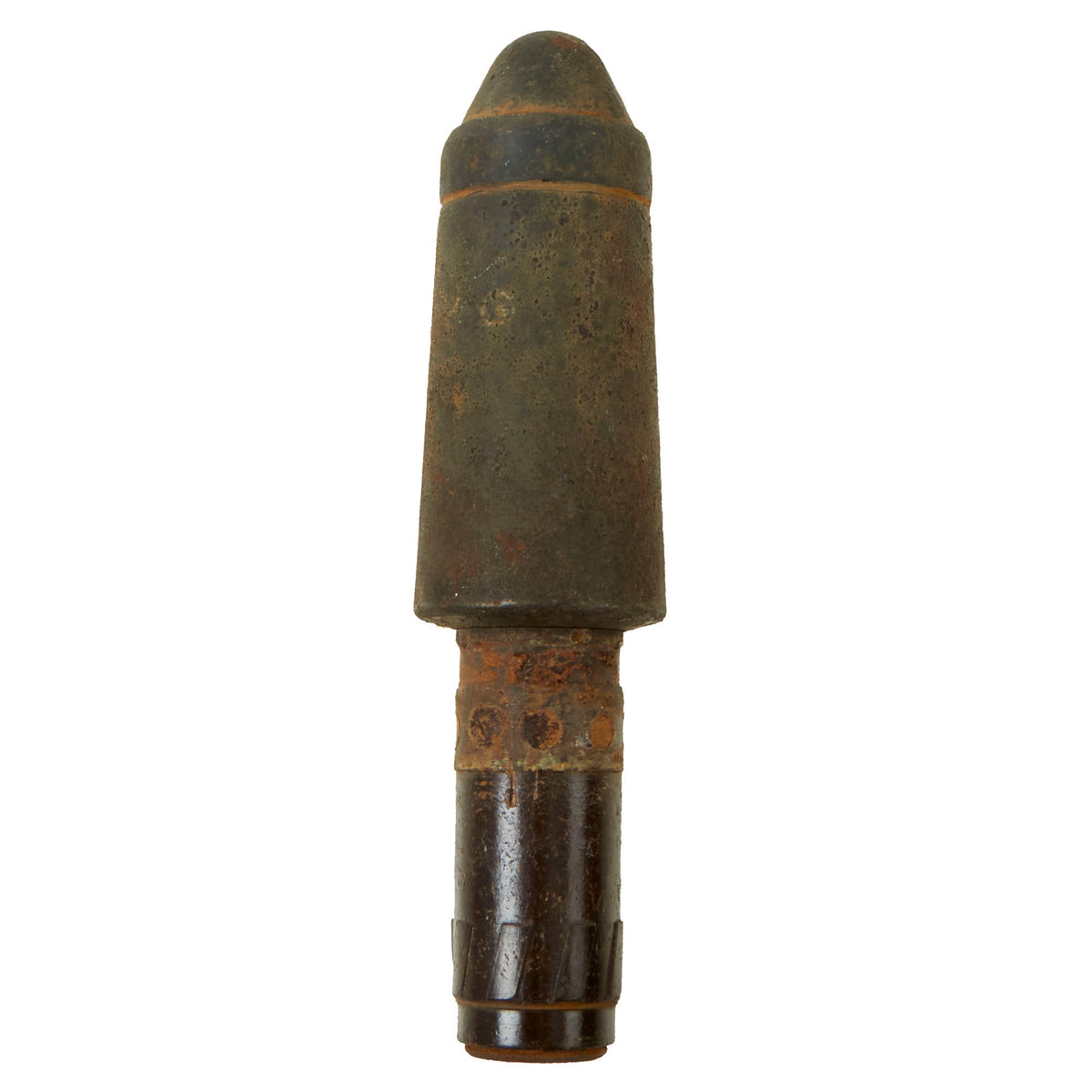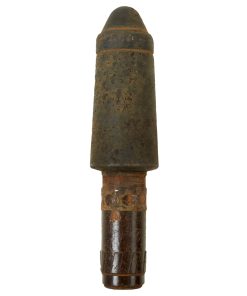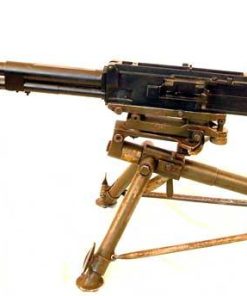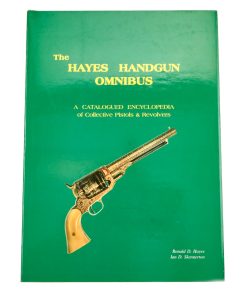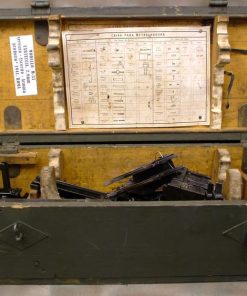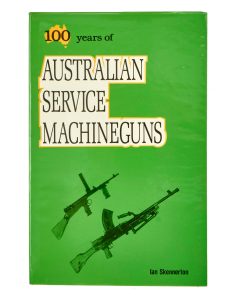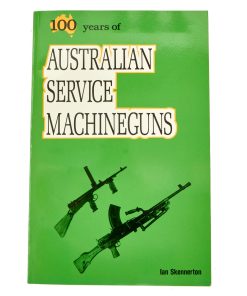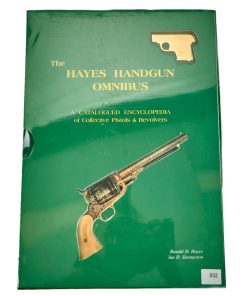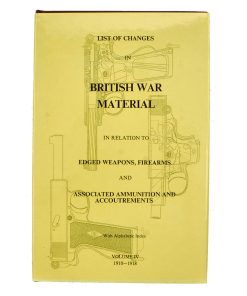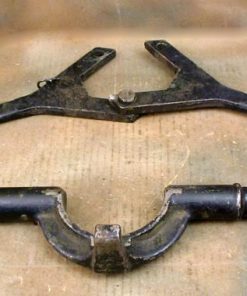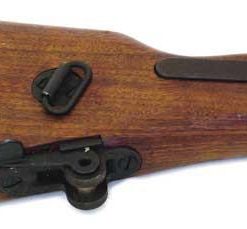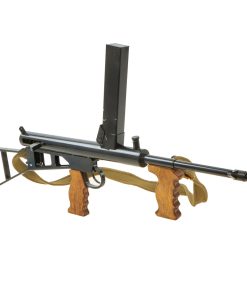Original German WWII Inert 98k Rifle Schießbecher Anti-Tank Grenade – Große Gewehrpanzergranate Original Items
$ 195,00 $ 78,00
Original Item: Only One Available. This is a very nice example of a WWII German Anti-Tank Rifle Grenade. The grenade is totally inert and void of any explosive content. This example is in total compliance per the standing guidelines from the BATF on inert ordnance.
Not Available For Export
Known in German as the Große Gewehrpanzergranate, (a.k.a the Model 40) HEAT rifle grenade developed by the German Wehrmacht. It has a 45-39mm tapered shape charge warhead and was the preferred Anti-Tank rifle grenade. It could penetrate 70mm of armor (regardless of range, as it was a shaped charge). It has a sheet metal warhead body with a mounted nose cap. The base fuze is inside a Bakelite shaft.
The base fuse unscrews and is in the safe (before firing) condition. As with the AZ5071 PD fuze, the safety device is a coiled flat spring nested in a releasing socket. This safety provides a secure block between the needle and detonator. The releasing socket is held in place by a stout helical spring. When fired, inertia pushes the releasing socket down against the helical spring and locks in a compressed condition. The coiled safety is freed and expands to the inside wall of the shaft clearing a path for the entire striker assembly to move forward on impact initiating the detonator. There is no creep spring, so unexploded ordnance was in a delicate condition.
The grenade would be used with a propellant cartridge and Schießbecher (shooting cup) grenade launcher to direct the projectile. Unlike many grenade launchers, the German launcher had a short rifled barrel with a caliber of 30 mm, which engaged the rifling ridges on the bottom of the bakelite grenade housing. The spin was thought to result in a more regular trajectory.
This example is offered in very good condition, with the internal shape charge housing still intact inside the warhead, and a good amount of the original finish present. The bakelite is intact, and a lovely color, with intact rifling grooves. Ready to display!
Fast Shipping with Professional Packaging
Thanks to our longstanding association with UPS FedEx DHL, and other major international carriers, we are able to provide a range of shipping options. Our warehouse staff is expertly trained and will wrap your products according to our exact and precise specifications. Prior to shipping, your goods will be thoroughly examined and securely secured. We ship to thousands clients each day across multiple countries. This shows how we're dedicated to be the largest retailer on the internet. Warehouses and distribution centres can be located throughout Europe as well as the USA.
Note: Orders with more than one item will be assigned a processing date depending on the item.
Before shipping before shipping, we'll conduct a thorough inspection of the items you have ordered. Today, the majority of orders will be delivered within 48 hours. The delivery time will be between 3-7 days.
Returns
The stock is dynamic and we cannot completely manage it because multiple stakeholders are involved, including our factory and warehouse. So the actual stock may alter at any time. It's possible that you may not receive your order once the order has been made.
Our policy is valid for a period of 30 days. If you don't receive the product within 30 days, we are not able to issue a refund or an exchange.
You can only return an item if it is unused and in the same state as the day you received it. You must have the item in its original packaging.
Related products
Uncategorized
Australian WWII Owen MK1 Machine Carbine SMG Custom Fabricated Replica with Sling Original Items
Uncategorized
Uncategorized
Uncategorized
Uncategorized
Uncategorized
Uncategorized
Uncategorized
Uncategorized
Australian WWII Owen MK1 Machine Carbine SMG Custom Fabricated Replica with Sling Original Items
Uncategorized
Uncategorized
Uncategorized
Uncategorized
Band of Brothers ORIGINAL GERMAN WWII Le. F.H. 18 10.5cm ARTILLERY PIECE Original Items
Uncategorized
Angolan Rebel 1970s era 60mm Inert Display Mortar from Angolan Civil War Original Items

